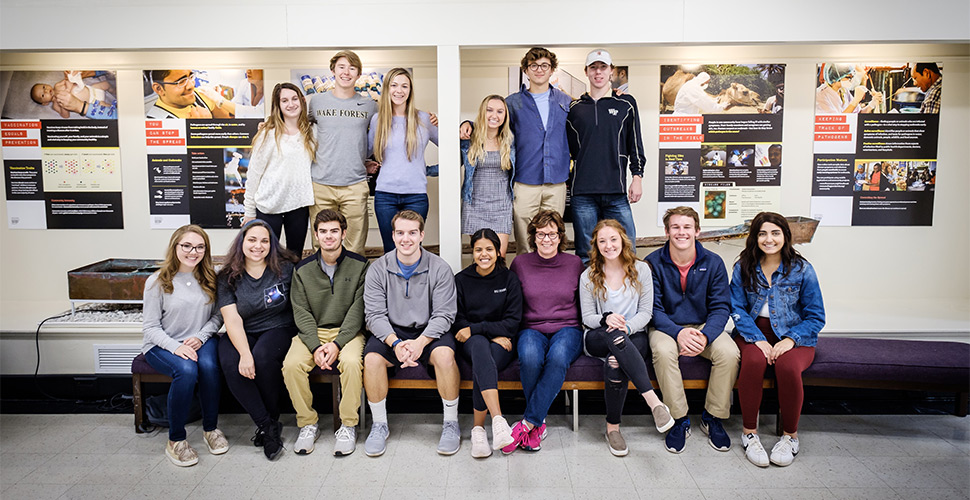WFU students present Smithsonian ‘Outbreak’ exhibit just in time for flu season
On Nov. 13, first-year students at Wake Forest University will unveil a localized version of a Smithsonian exhibit about infectious diseases, aiming to show how Triad-area residents can help mitigate viral epidemics such as the flu and Zika.
“Outbreak: Epidemics in a Connected World” debuted at the National Museum of Natural History earlier this year, the 100th anniversary of the 1918 flu pandemic that killed 30-50 million people. The museum offered a DIY version of the exhibit to organizations worldwide, so they could tailor the message to specific communities.
That’s what attracted biology professor and virologist Pat Lord. “We are a community,” she said. “What do we do to keep our community healthy?”
When Lord’s first-year seminar students walked into their first class this semester, they became “fellows” in what she dubbed POW, or Prevent Outbreaks Worldwide, and began studying viral outbreaks including the 1918 flu and the more recent Ebola, Zika and MERS CoV, as well as working though materials provided by the Smithsonian. They could choose to use as much of the exhibit as they wanted and supplement as they saw fit.

Media and the public are invited to attend the exhibit’s opening night reception on Tuesday, Nov. 13, from 5-7 p.m. in the Winston Hall atrium.
Student docents will lead guests through the interactive exhibit, which will include about a dozen panels as well as videos and interactive items that explain the connection between human, animal and environmental health.
More than that, Lord said the students want to influence how people behave to help stop the spread of epidemics such as the flu – a timely goal as the North Carolina flu season typically begins in October and November.
“We want to plant a seed that might lower pandemic risk. Changing your behavior on an individual and community level makes a difference.” Pat Lord, biology professor and virologist

“People really aren’t as hygienic as they should be. It’s gross that people don’t routinely wash their hands or sneeze into their elbow. Those people are causing viruses to spread faster,” said Cat Walwer, a first-year student from Fayetteville, N.C. who aspires to be a physician assistant. “I want people to be able to take away a plan of action that allows them to feel as if they can contribute to an ongoing healthcare issue.”
The exhibit includes action items of things you can do to keep yourself safe, and things you can do to keep society safe: Washing your hands often. Getting a flu shot. Staying home when you’re sick.
That last tip is one of the biggest take-home messages for Sabrina Sholts, curator of the Smithsonian exhibit.
“When I’m sick, I don’t power through anymore,” Sholts said. “I work from home and keep my colleagues safe.”
Categories: Experiential Learning, Research & Discovery

